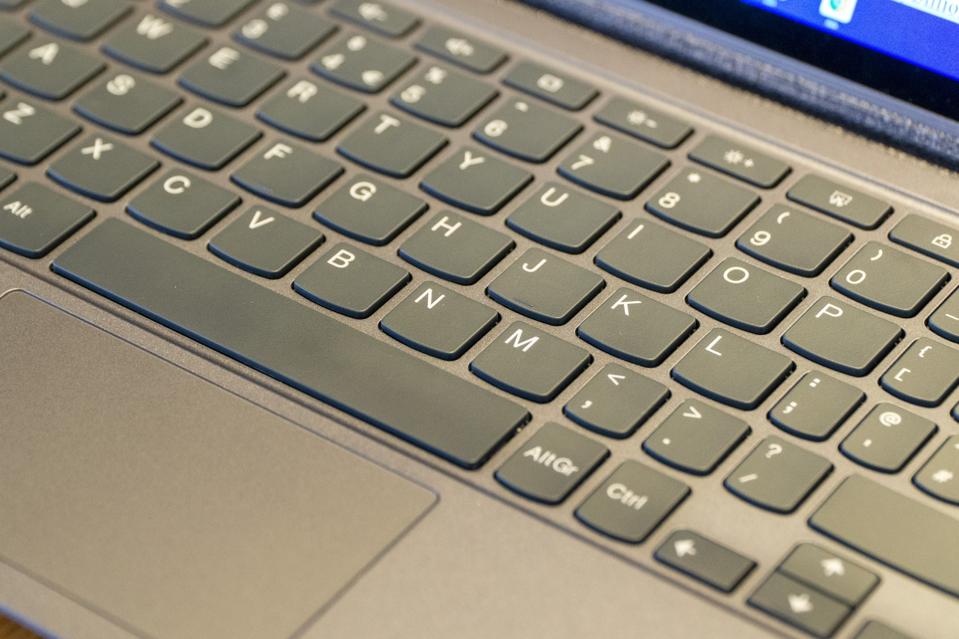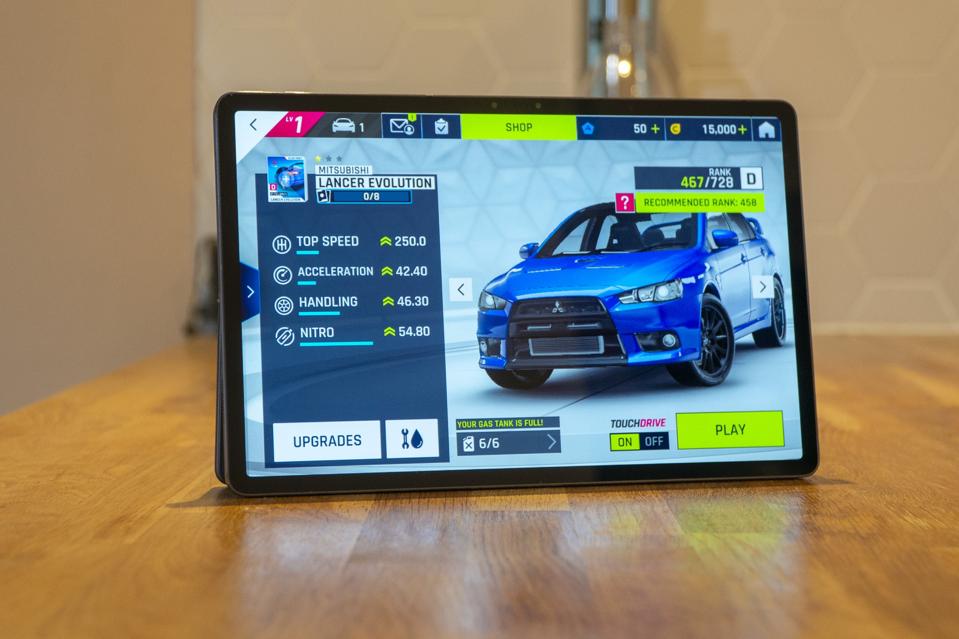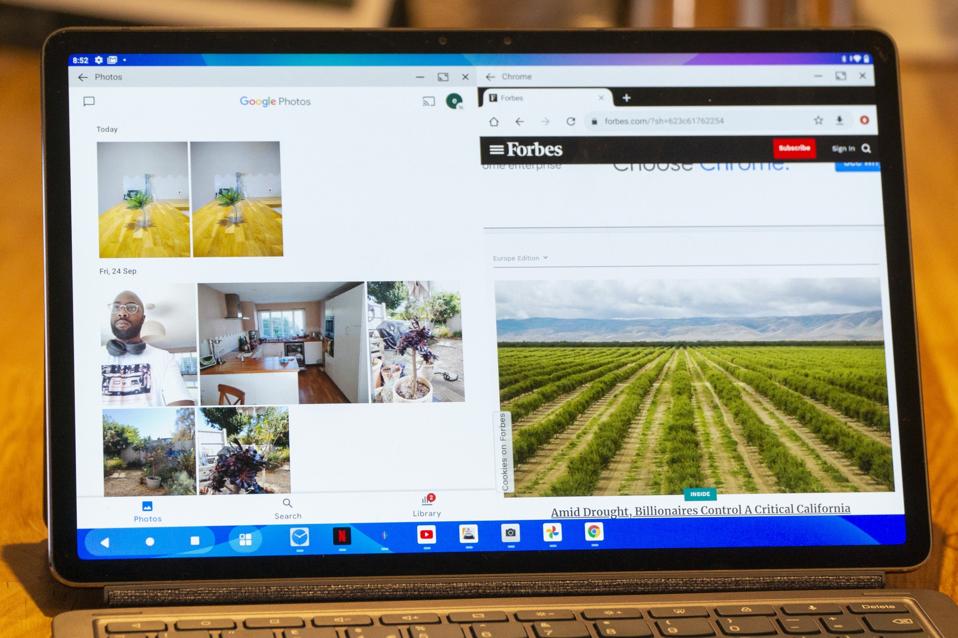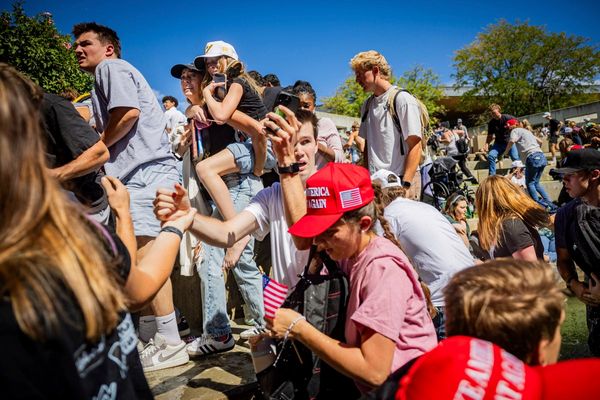The Lenovo Tab P11 Pro is a tale of two tablets. On one side it’s a fairly run-of-the-mill Android tablet that looks and performs far better than much of the dross you’ll see discounted during Black Friday, but doesn’t quite matchup to the prowess of Samsung and Apple competitors.

On the other side, when combined with the keyboard case and stylus, this becomes a very capable and enjoyable tablet that’s hugely aided by Lenovo’s proprietary productivity software. With all accessories, it is a tablet transformed.
It looks very similar to Samsung’s Galaxy Tab S7, which I suspect is intentional, but with current discounts because a new model is on the way, it’s a bit cheaper. At a current price of $550, this is a solid alternative to Apple’s far more expensive iPad Pro, with reasonably priced accessories. Read on for more.
Lenovo Tab P11 Pro In A Nutshell
Pros:
- Outstanding battery life
- Great OLED 2k display
- Transforms with accessories
Cons:
- Camera is bad
- Underpowered processor
- Some app sizing issues
Lenovo P11 Pro Technical Specifications
Price as tested: $550| CPU: Snapdragon 730G| Display: 11.5 inch, 2k OLED pixels, 350 nits| Memory: 4-6GB RAM | Storage: 128GB | Battery life: 8600mAh | Dimensions: 264.3 x 171.4 x 6.9 mm | Camera: 13MP wide, 5MP ultra wide, 8MP selfie | Ports: MicroSD, SIM |
Lenovo Tab P11 Pro Design
The design is strikingly similar to Samsung’s Galaxy Tab S7. If the Lenovo device didn’t have its company name plastered on one side of it, you might not be able to tell the difference. The camera is in the same position, the aluminium finish feels similar to the touch and some of the markings are near-identical.
Clearly it's a design that works because the P11 Pro looks like a sleek, premium tablet. It’s slim at 6.9mm, the rear-facing camera protrusion is minimal and the bezels are moderately sized. There’s a fingerprint scanner that doubles as the power button, which wasn’t wildly successful at instantly recognising my print every time. I often found it failed to register my fingerprint more than 50 percent of the time.
On the front there’s an 8MP selfie camera, whilst around the sides there are the volume buttons, the keyboard connector, a Micro SD port and the SIM tray; lthough there’s no headphone jack, which seems like a strange omission considering the device has almost everything else. It is a familiar tablet design that is appropriately premium for the price. As a slab, though, it transforms with accessories.

My review unit came with a keyboard case and a stylus, called the Precision Pen 2. The grey fabric keyboard case is split into two parts—one half grips to the back of the device, whilst the other part, the keyboard, clips to the bottom. The tablet quickly recognizes this automatically and puts the device into “productivity mode,” which enables a more desktop-like experience. More on this later. As a combo, it’s nicely put together. The kickstand can be adjusted from upright to almost flat and is sturdy enough to support some aggressive display tapping.

The keyboard keys are spongier than usual to and typing takes some getting used to, but they're responsive and do the job. You’ll also want to turn down the trackpad’s sensitivity if you want to accurately click on anything. I did notice the occasional failure to register clicks, but it worked well for the most part and having a mouse pointer on an Android tablet is always welcome.
Lenovo Tab P11 Pro Display
The good news about the 11-inch display is that it has a 2k resolution (1600 x 2560 pixels) and an OLED panel. So the blacks are deep and colors are vivid. Bright, colorful shows like Rick and Morty really pop on this tablet, whilst darker content—like some poorly lit scenes in The Walking Dead—have excellent contrast. It looks good. When working with creative content this really helps for making sure the lighting and hues are properly adjusted and accurate.

The bad news is that it doesn’t have a particularly high refresh rate at 60Hz. Remember I mentioned the janky animations? A lower refresh doesn’t help with that and in 2021, on a device with an ostensibly good screen, I’d hope for a higher refresh rate. On the flipside, this at least means the tablet has a longer battery life.
Lenovo Tab P11 Pro Performance
Despite the word ‘pro’ being in the name, this Lenovo tablet is powered by a decidedly lower tier chipset in the Snapdragon 730G. For reference, that chip is also in Google’s Pixel 4a, which is the company’s budget version of the 2019 Pixel 4. There’s also 6GB of RAM and 128GB of storage.
But that doesn’t necessarily tell the full story. In terms of real world use, it performs well enough. Moving around the device and opening and signing into apps is quick. But dragging apps along the screen in performance mode does feel slightly stuttered, it isn’t a wildly smooth process. As a side note, I really miss the smooth transition animations you get on Apple devices, or better Android devices. It all feels slightly abrupt on the Lenovo.
The tablet does perform, though. I put it to the test with Asphalt 9 and it handled the game with no stutters or performance issues. The keyboard controls were responsive too, if a little confusing. The caveat here is that all Android games are optimized to run on almost all devices because there are so many, so it should work well.
The left and right-sided JBL tuned speakers are impressive too, with a crisp, clear sound that distinguishes between different frequencies and a surprising amount of bass. I used it with the volume cranked up whilst watching a cooking video in the kitchen and I could hear the instructions without higher volume distortion over the sound of frying and crashing around.
One of the major benefits of a device this size, particularly one that comes with a stylus, is the creative tasks it can do. The Precision Pen dovetails nicely with apps like Adobe Lightroom. I was able to tweak my photos with a level of, erm, precision that can’t properly be done with your clunky digits. Adjusting highlights, applying effects and tweaking colors is responsive and has the appropriate amount of dexterity.
There are two things that bug me though. Firstly, Adobe’s Premiere Rush (its very capable mobile editing software) isn’t compatible with the P11 Pro. Other services like KineMaster work, but it’s galling to spends hundreds of dollars on a device that’s pitched as a productivity master not work with the best software.

The second is the sizing of apps in productivity mode. This essentially turns the tablet into a more desktop-like experience by opening apps as windows instead of full screen. This means you can run several apps concurrently, rather than in the background, as is standard on mobile. This is a very useful feature which enables side-by-side multitasking, but it also means some apps start to act strangely. Adobe Lightroom, for example, can’t be made full screen, so it feels odd to work with creative software in a small window. You can toggle productivity mode on or off, but it’s frustrating to have to do this for certain apps.
I do like the concept though and it mainly works well. Having two apps snapped to each side of the screen massively enhances the experience. Having your research on one side, with your word processing software on the other, makes this tablet something you can work on quite comfortably.
Battery life is very impressive thanks to the 8600mAh power pack. I charged the device fully when it first arrived and it went four days without another charge despite intermediate use during this review, including playing games, picture editing and writing some other stories. This amounted to just under 10 hours of screen usage over the four day period. That’s not bad at all.
Lenovo Tab P11 Pro Cameras
Less impressive are the cameras. The 13MP wide and 5MP ultra wide sensors capture images akin to a cheap, mid-range Android phone. In the device’s defense, tablet cameras are bad across the board, and they aren't built for taking top-end photography. I suspect your smartphone does a far better job. With that said, the image quality is disappointing.

Indoors, pictures lack a lot of detail, particularly with the wide lens. At night it all collapses. Outside, I found the rear cameras really struggled with bright light, producing over-exposed shots. There’s also very little contrast and the app struggled to focus properly. The 8MP selfie camera is similarly lacking in detail, but it’s at least decent enough for a video call.
The camera app itself is very basic, offering three shooting options: video, stills and portrait stills—nothing else. There’s no manual mode or other shooting options either. As I say, this device isn’t designed for that, but I'd at least hope for a better showing.
Is it worth your money?
The Lenovo P11 Pro really comes to life with its two accessories, so if you can pick up a combo deal, then do. The 2K OLED display is fantastic, as is the epic battery life. I also like Lenovo's take on multitasking with productivity mode, which added a new dimension of functionality to the device. The camera, however, is a serious disappointment, which feels like an annoying addendum to an otherwise capable tablet. With current discounts, this Lenovo P11 Pro is a solid alternative to the bigger name slabs.
Want more tech news, deals and tips? Follow me on Instagram and Facebook.









